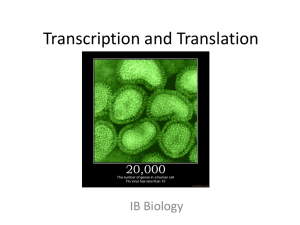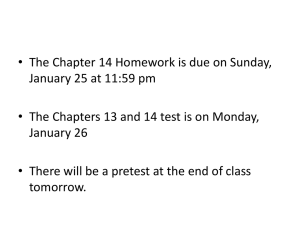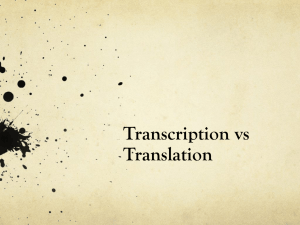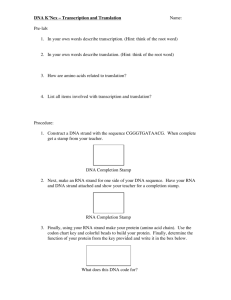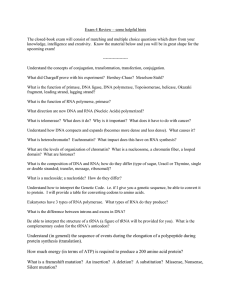Name AP Biology CHAPTER 14 GUIDED NOTES: From DNA to
advertisement
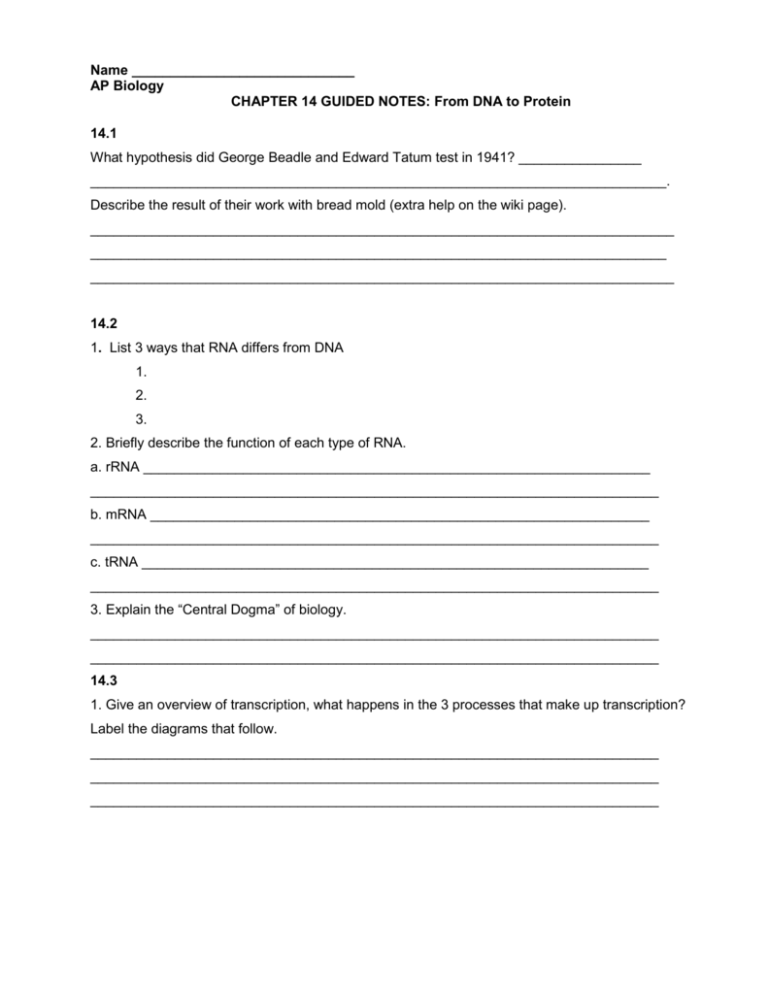
Name _____________________________ AP Biology CHAPTER 14 GUIDED NOTES: From DNA to Protein 14.1 What hypothesis did George Beadle and Edward Tatum test in 1941? ________________ ___________________________________________________________________________. Describe the result of their work with bread mold (extra help on the wiki page). ____________________________________________________________________________ ___________________________________________________________________________ ____________________________________________________________________________ 14.2 1. List 3 ways that RNA differs from DNA 1. 2. 3. 2. Briefly describe the function of each type of RNA. a. rRNA __________________________________________________________________ __________________________________________________________________________ b. mRNA _________________________________________________________________ __________________________________________________________________________ c. tRNA __________________________________________________________________ __________________________________________________________________________ 3. Explain the “Central Dogma” of biology. __________________________________________________________________________ __________________________________________________________________________ 14.3 1. Give an overview of transcription, what happens in the 3 processes that make up transcription? Label the diagrams that follow. __________________________________________________________________________ __________________________________________________________________________ __________________________________________________________________________ 2. Out of the work of a number of scientists, we have now determined that the four “letters” of the DNA “alphabet” translates to the twenty “letters” of the amino acid “alphabet”. Briefly explain how this works. __________________________________________________________________________ __________________________________________________________________________ __________________________________________________________________________ 3. Why is the genetic code said to be universal? What is the significance of this? __________________________________________________________________________ __________________________________________________________________________ __________________________________________________________________________ 4. The enzyme which transcribes the DNA is ________________________________________ The strand of DNA that is transcribed is called ____________________________________ The strand of DNA that is not transcribed is called _________________________________ 5. Describe the significant differences between transcription in prokaryotes and eukaryotes. __________________________________________________________________________ __________________________________________________________________________ __________________________________________________________________________ 6. Make notes on the following diagram to describe the model of a transcription bubble. 14.4 1. Distinguish between exons and introns. __________________________________________________________________________ __________________________________________________________________________ 2. Describe what happens to the RNA transcript, in eukaryotes, before it leaves the nucleus. __________________________________________________________________________ __________________________________________________________________________ __________________________________________________________________________ 3. What is the advantage of the 5’ cap and poly A tail? __________________________________________________________________________ __________________________________________________________________________ __________________________________________________________________________ 4. Watch the Lifewire RNA Splicing animation tutorial 14.3 http://bcs.whfreeman.com/thelifewire9e/default.asp#542578__591303__ Describe the mechanism for splicing RNA, including the necessary proteins, and label the following diagram to explain the process. __________________________________________________________________________ __________________________________________________________________________ __________________________________________________________________________ 14.5 1. Identify the roles of the players of the translation process. a. Transfer RNA ___________________________________________________________ __________________________________________________________________________ b. Aminoacyl-tRNA synthetase ________________________________________________ __________________________________________________________________________ c. Ribosomes _____________________________________________________________ __________________________________________________________________________ 2. Explain the charging of tRNA and how is ATP used. __________________________________ ____________________________________________________________________________ ____________________________________________________________________________ ____________________________________________________________________________ 3. The ribosome is the molecular workbench where translation takes place. Explain the 3 sites and their importance to the processing of mRNA. 1. _______________________________________________________________________ 2. ______________________________________________________________________ 3. _______________________________________________________________________ 4. Identify and briefly describe the steps of translation. a. Initiation ________________________________________________________________ __________________________________________________________________________ b. Elongation ______________________________________________________________ __________________________________________________________________________ c. Termination _____________________________________________________________ __________________________________________________________________________ 5. Explain how polysomes are able to increase the rate of protein synthesis ____________________ _____________________________________________________________________________ ______________________________________________________________________________ 14.6 How do signal sequences determine where a protein will go after it is made? Give an example ___________________________________________________________________________ __________________________________________________________________________ __________________________________________________________________________ 20. Use the diagram to trace the flow of chemical information from a gene to its protein product. Label and make notes as to what is happening.

